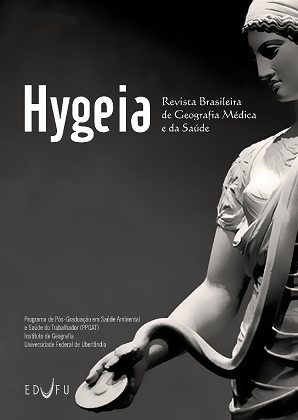MULTIVARIATE GEOVISUALIZATION OF DENGUE, ZIKA AND CHIKUNGUNYA CASES IN BRAZIL: A DIDACTIC EXPERIENCE
DOI:
https://doi.org/10.14393/Hygeia132507Palavras-chave:
Aedes aegypti, Dengue, Zica, Chikungunya, Geovisualização, Análise Exploratória de Dados Espaciais, Geotecnologias, Sistemas de Informação Geográfica, Didática.Resumo
In recent decades, the Aedes aegypti mosquito, the vector of dengue, Zika, chikungunya and other diseases, has become an increasing concern in Brazil and other tropical countries. However, the spatial distribution of these diseases in Brazil is not homogeneous, implying that there are distinct risk levels and various guiding strategies for fighting these diseases. This paper presents a didactic exploratory multivariate spatial data analysis of dengue, Zika and chikungunya cases in Brazil in 2016 in the context of an undergraduate course. The students elaborated, interpreted and discussed multivariate maps using techniques such as proportional symbols, hachure density, bivariate and trivariate choropleth composition, contiguous cartograms, conditional maps and matrices of maps and graphs. The students investigated the various interpretative possibilities based on the intrinsic and extrinsic combinations of multivariate geovisualizations. Through their interpretations of the spatial representations, the students were able to identify that the states of Rio Grande do Norte, Paraíba and Alagoas are experiencing the most critical situations for these three diseases, while the state of Minas Gerais has a serious situation only for dengue. In contrast, the maps clearly revealed that the states of Rio Grande do Sul, Santa Catarina and the Northern Region of the country experienced fewer cases of the diseases. It can be concluded that the undergraduate course improved the students' abilities to build and interpret spatial representations using geotechnologies.








